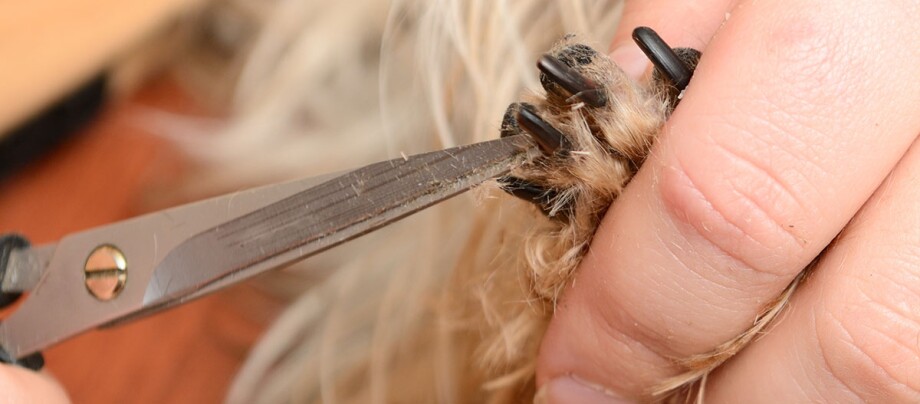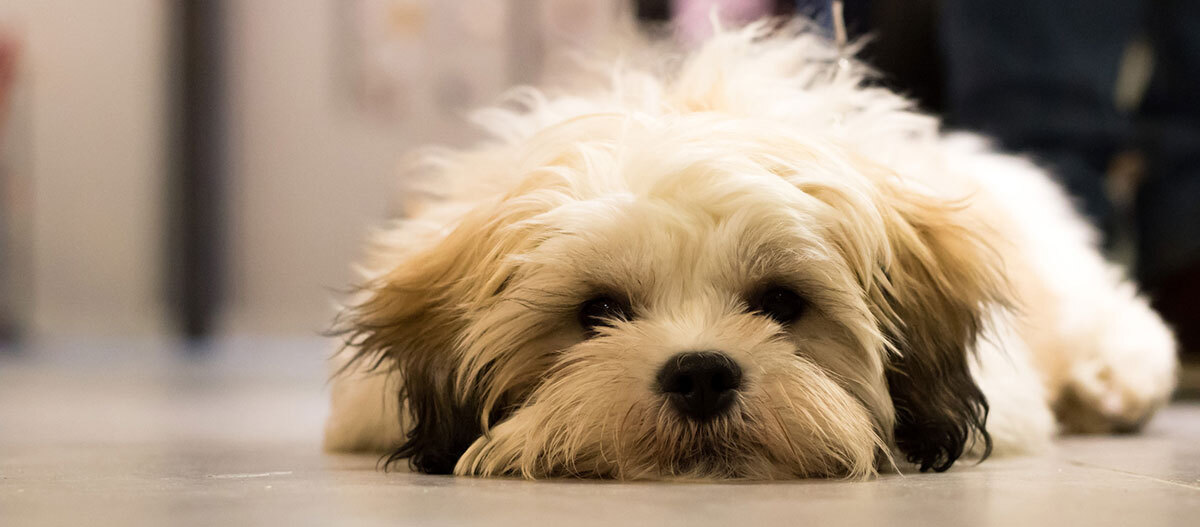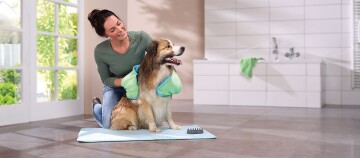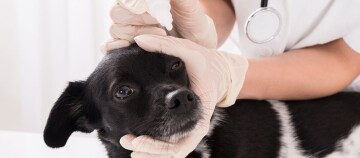How to Trim Your Dog’s Coat – Tips for Healthy and Beautiful Coats
07.10.2022 - Reading time: 3 minutes

Your four-legged friend's coat not only gives it its typical appearance, it also fulfils important protective functions: It protects the skin from dirt and the elements, balances out the temperature in hot weather and blocks dangerous UV sunlight. Nevertheless, some dog breeds need to be clipped or trimmed on a regular basis. Read here how to treat, clip, brush or trim your four-legged friend's coat properly.
- Mechanical shearing for long-haired dogs - not always the right choice
- The ever-popular "summer haircut" - but please proceed with caution
- Shearing longhaired dogs - but how?
- Trimming: the optimal choice for long-haired dogs with a dense undercoat
- Trim it yourself or go to the groomer?
- Step-by-Step Basic Guide to Dog Shearing
Mechanical shearing for long-haired dogs - not always the right choice
Take a closer look at your dog’s coat: Is it a stock-haired, a short-haired or a wire-haired? Does it have a single coat (top coat) or a multi-layered coat (with undercoat)? If it is the latter, the dog’s hair should be trimmed (more on this below).
When should you shear a dog?
- As a rule, dog breeds with a single-layer coat structure, i.e. with only top coat such as the Maltese, Yorkshire Terrier or poodle, should be sheared.
- Groomers (specially trained dog hairdressers) recommend a careful shearing when it comes to poodles, as the poodle’s skin is highly sensitive and its light summer coat protects it from high temperatures and UV sunlight.
- As a general rule, a complete shearing should only be carried out if the coat is totally matted and nothing else works. As a rule, the comb, brush and scissors should first be used on the legs. The fur should only be trimmed very carefully.
Please note: If you have a single-coated, light-skinned dog, a short haircut means that you will need to provide sufficient UV protection with sunscreen in the summer and dog clothing in the winter.
The ever-popular "summer haircut" - but please proceed with caution
For dogs with an undercoat, the ever-popular “summer clipping” should only be carried out after thorough consultation with experts. One possible consequence of unskilled shearing is so-called clipper alopecia. This results in many hairless, “naked” or insufficiently interspersed areas in the coat of your four-legged friend. Breeds with a very slow-growing top coat are likewise prone to this condition. In water dogs such as Portuguese water dogs, golden or labrador retrievers, the undercoat is actually of vital importance, as it protects the skin from drying out and from hypothermia in the water and also provides the necessary buoyancy for swimming.
Shearing longhaired dogs - but how?
For each breed of dog, there are different aspects to consider, which is why there is no universal rule on the perfect shearing. The dog’s coat should be cut in such a way that it can continue to fulfil its important protective functions.
Good equipment is crucial for smooth, stress-free shearing. The clippers should be powerful and have a strong cutting force to ensure that the procedure is not painful for your dog. In addition, you will need different attachments, clippers (with rounded ends), different brushes and combs.
Trimming: the optimal choice for long-haired dogs with a dense undercoat
Dog breeds with a very dense undercoat should only be shorn short in a few exceptional cases. To remove dead top coat, trimming is the right choice of coat care here.
Some dog breeds, like the wire-haired dachshund, do not have a natural shedding cycle. In order to prevent skin irritation and eczema and to stimulate coat growth, trimming is recommended every three to four months.
Trim it yourself or go to the groomer?
There are two methods of trimming: hand trimming and removing hair with a trimming knife. Both methods of grooming require a lot of experience and practice. The reason is that it is difficult for novices to correctly identify which dog hair should be plucked.
A skilled groomer generally trims the dog’s hair by plucking out the longest trimmable hairs with thumb and forefinger. After successful trimming, the colour of the dog’s coat will appear vibrant and the coat will retain its important qualities without being incorrectly thinned.

While grooming with a trimming knife, ensure that the serrated blade is as blunt as possible. If it is too sharp, it could easily result in an undesired haircut. Never pull out too large tufts of hair at once, because the procedure is painful even if the hair is already dead.
Are you familiar with the Fellini dog salons? Check out the dog hairdresser at your nearest Maxi Zoo store.
Step-by-Step Basic Guide to Dog Shearing
It is all about the right preparation:
- Acclimatise: Prior to the first shearing, you should get your dog used to the clippers, their vibration and the noise. Do not attempt the first cut until your dog is comfortable with the clippers. It helps to have a friend or family member present for reassurance the first time.
- Prepare the table: For a better grip, be sure to place your dog on a table made non-slip by using a rubberised pad.
- Brushing out: Comb and brush the coat thoroughly beforehand to remove any tangles and matting to ensure that the clippers glide through the coat more smoothly.
- Cutting length & clipper attachment: Find out the recommended hair length for the breed and coat condition of your dog. Initially try out a more generous shear setting of approx. 10mm.
Now you can proceed to actually shearing your dog:
- Correct posture: Ideally, your dog should stand upright on the non-slip surface.
- Correct direction: The cutting should be performed in the direction of fur growth, without exception. Start with the neck and then run the tool down the back towards the chest, belly and legs.
- Regular clipping: The clipper head should be guided close to the dog’s body without applying pressure. It is best not to stop and start in order to prevent unwanted coat patterns.
- Sensitive body parts: Be very careful around the head, ears, paws or genitals and avoid using the clippers if necessary. Use a pair of scissors with rounded ends to avoid cuts.
- No-go: Never shear or cut your dog’s vibrissae (long “whiskers”). These are very important tactile hairs for your dog.
- Re-brushing: A thorough re-brushing removes any loose hair and ensures your dog gets the relaxation he deserves – along with a treat as a reward.


